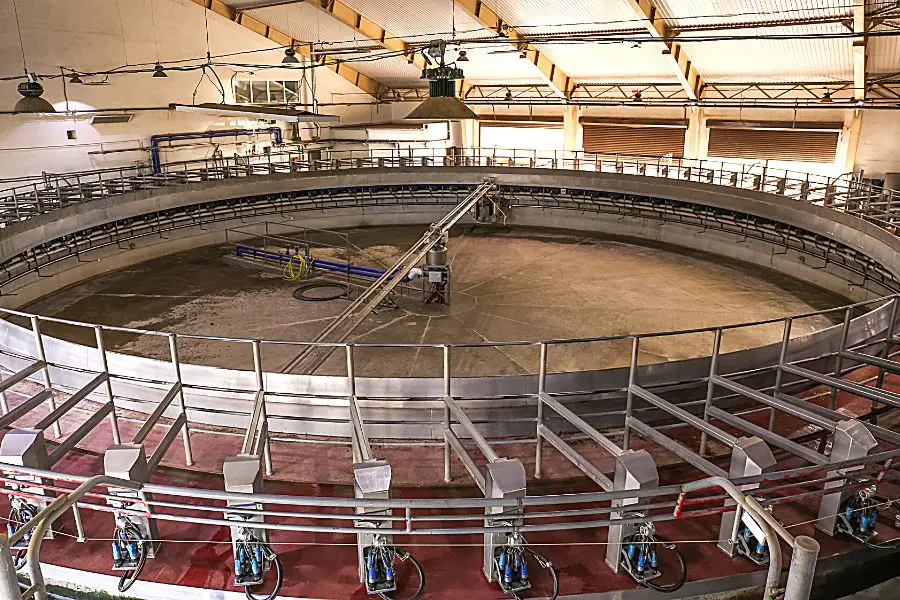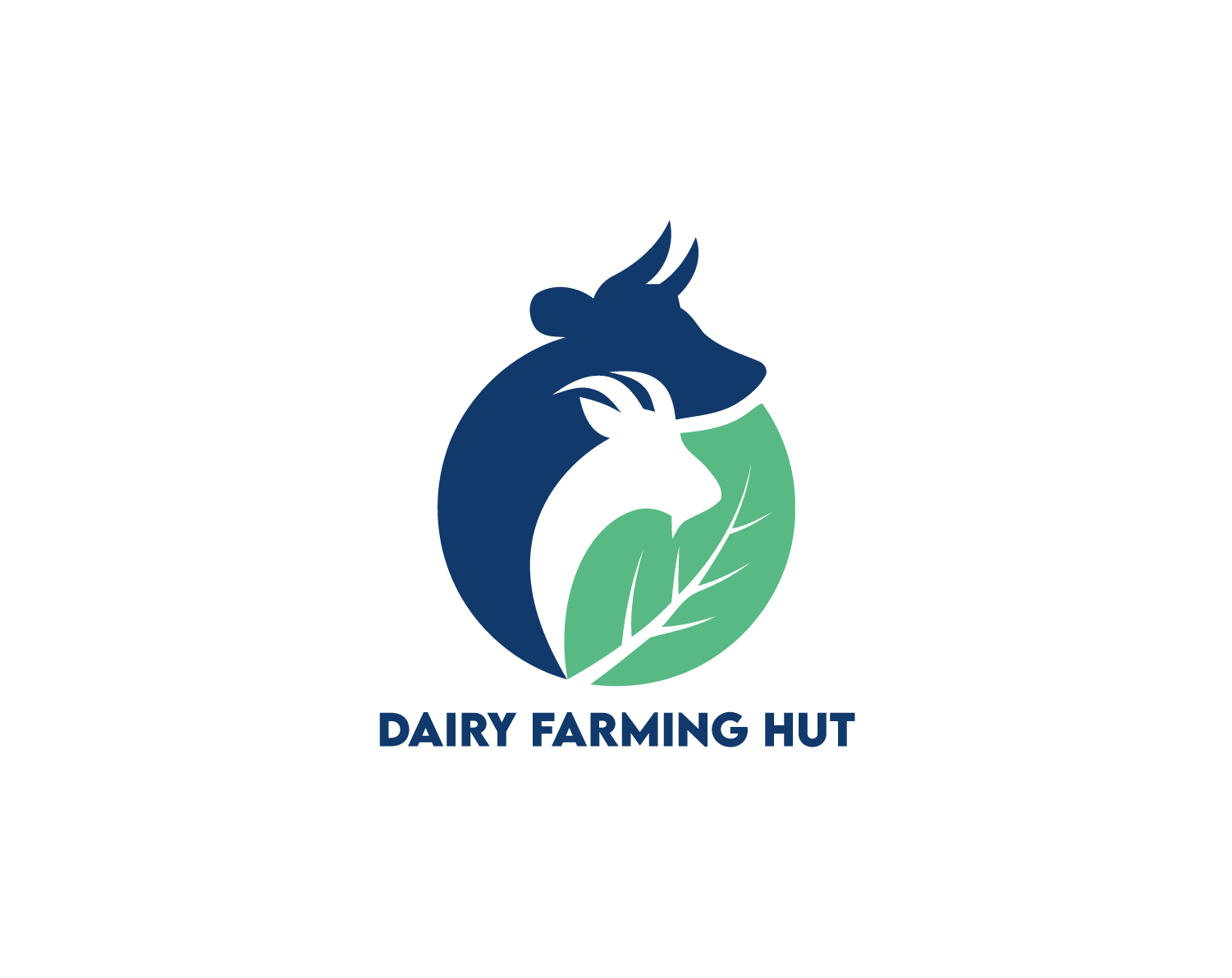The goal of a milking parlor is to milk dairy animals efficiently and ergonomically without causing them stress or harm. Ruminants need to spend most of their day resting and eating so they can make milk. They shouldn't be cramped in holding areas for extended periods because the milking parlor is too small. But how big should a milking parlor be?
A milking parlor must be big enough to milk an entire herd twice to thrice daily. Ideally, dairy animals shouldn't spend more than an hour per session in the parlor. The size and design of the milk parlor stalls will depend on the animal's body shape, udder position, and if it has horns.
Milking parlors require additional space for the milking lines, pumps, regulators, storage, feeding troughs, equipment, and office. Additionally, the operators need to be able to move around in a full milking parlor without too many obstacles. Let's look at the requirements for deciding how big a milking parlor should be.
Considerations For Planning The Size Of A Milking Parlor

When planning how big your milking parlor needs to be, there are many things to consider. For example, the size of the milking parlor will depend on the following, plus many more factors:
- The type of dairy animal you are milking, e.g., cow, goat, or sheep,
- The breed's physical characteristics and temperament,
- The size of the flock or herd,
- Your budget,
- The type of milking parlor you choose, e.g., parallel, side-by-side, rotary,
- Where do you plan to put the milking parlor,
- The amount of space available to you,
- Ergonomics,
- The height of the pit,
- How many laborers do you have for the milking parlor,
- Plans for future herd growth,
- The size of the holding area,
- Space for machinery, pipes, and milk receivers, and
- Space for collection of the milk with limited contact to dung.
The list continues, so it would be helpful to consult with other dairy farmers and research the best milking practices before constructing a milking parlor. First, however, let's look at some of the requirements for milking parlors for three popular dairy animals: cows, goats, and sheep.
How Big Should A Milking Parlor Be For Cows?
A milking parlor for cows needs to be big enough to accommodate the dairy herd two to three times a day while being as efficient as possible. The milking parlor's size will depend on the current and future herd size. By increasing the number of milking stalls, you can reduce the overall milking time to an hour per milking, allowing the cows more time outside the parlor to make milk.
For a cow to efficiently produce milk, it needs about 12 hours a day for lying down and about 4.5 hours per day of eating. Thus, the size and location of the milking parlor should accommodate these basic needs so that the cow doesn’t spend hours waiting in the parlor, holding area, or in transfer.
Considerations For Planning A Milking Parlor For Cows
Depending on the preparation routine for the cows, an operator should be able to handle 14 to 22 milking units at a time. To determine how many milking units you need in the milking parlor, you can divide your herd size by seven, eight, or nine. The maximum number of cows per unit should be nine.
For example, if you have 120 cows, you will need about 16 milking units to ensure an efficient throughput rate.
However, suppose you have a larger herd (more than 150 cows). In that case, it is worth considering a long herringbone or rotary parlor, each requiring two operators.
An often-overlooked factor when designing a milking parlor is the size of the holding pen. The recommended amount of space for each cow waiting in the holding area is 15 to 20 square feet, depending on the cow's size.
The type of milking system used will also determine the dimensions of the milking parlor. Each milking system has pros and cons regarding the amount of space they require, the positioning of the cows, and the distances the operator(s) must walk.
The table below explains five milking parlor types and their size requirements.
Parlor Type | Notes And Requirements For Parlor Size |
|---|---|
Center Herringbone Parlor |
|
Side-Opening (Tandem) Parlor |
|
Parallel Parlor |
|
Rotary Parlor |
|
Robotic/Automated Milking Systems (AMS) |
|
Table 1: Different types of milking parlors and their size requirements
How Big Should A Milking Parlor Be For Goats Or Sheep?
Milking parlors for goats and sheep are similarly designed to those for cows. However, because these dairy animals are smaller, the scale of the milking stations will be smaller. The milking parlor size for goats and sheep will depend on the size of the herd or flock and how frequently they need to be milked in a day.
When deciding on what type of milking parlor to build, the producer should consider the following:
- The size of the animals,
- Whether they are polled or not, and
- The size and position of the udders.
For example, the platform on which the animals stand should be high enough to prevent the operator from bending too much to reach the udders [6].
The minimum dimensions for a milking station for goats are as follows [7]:
- Height of barriers for goats to pass under: 27.5 to 36.6 inches
- Width of passages: 10.2 to 15.7 inches
- Distance of feed barrier to rump rail: 27.1 to 38.1 inches
- Widths of feeder gaps: 4.7 to 6.3 inches
How Big Is A Portable Milking Parlor?
Portable milking parlors are convenient for cows and small ruminants scattered over a large area. They can be hitched to a tractor, taken to pastures, and used in the field. Larger portable milking parlors for cows can accommodate up to 12 cows at a time. Pasture-based milking parlors for small ruminants can accommodate up to 24 goats or sheep.
Conclusion
The size of milking parlors should be based on herd size and the size and shape of the ruminants being milked. It is preferable to make a milking parlor bigger than your current needs in anticipation of herd growth. Bigger milking parlors allow you to milk more animals simultaneously, reducing their time in the parlor. Additionally, each animal should have enough space to minimize stress levels.
Sources:
